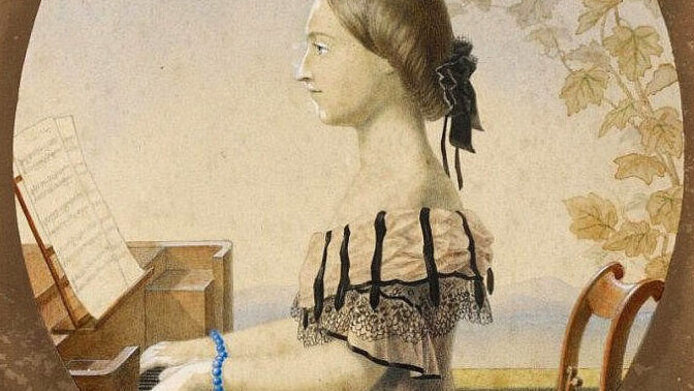What biofictions tell us about gender

For researchers, contemporary biofictions constitute an interesting hybrid format combining elements of both literary fiction and biography. “This genre has seen an astonishing boost in popularity over the past two decades,” says Julia Lajta-Novak from the University of Vienna. What makes the genre particularly informative for literary studies are the poles between which these biofictions are situated: between fidelity to fact and invention, identification and alienation, relationality and agency, being faithful to the genre and breaking it up.
“I want to learn how biofictions about the journey of a character adopt, reflect or contravene available gender narratives,” notes Lajta-Novak. These are her main questions in the project “The female artist in the biographical novel: gender and genre”, which is funded by the Austrian Science Fund FWF: how and for what are historical female artists remembered in cultural memory? The theoretical foundation is provided primarily by gender theory as relatied to biographical research.
Models of female identity
Lajta-Novak is interested in characters on whom multiple works of biofiction have been produced: the composer and pianist Clara Schumann, for instance. Films about her life enable the researcher to trace and compare historical gender concepts: “Released in 1944, the movie Träumerei focuses on the theme of duty. Clara Schumann's sense of duty tells her that she must champion her husband's music.”. In Song of Love from 1947, Clara Schumann is portrayed as being publicity-shy, an ever-loving wife and mother. This is in contrast with Frühlingssinfonie, first broadcast in 1983, in which she is portrayed as a sex idol. Geliebte Clara was released in 2008. “The film tells the story of an independent, strong woman who fights her way through all vicissitudes of life. She decides against Johannes Brahms – the historical Clara is often assumed to have had an affair with him – and for her independence,” notes Lajta-Novak.
Cultural history evidence
Such different interpretations are not the only aspects that reveal a lot about their time of origin – so do the things that are not shown. A case in point are works about the poet Elizabeth Barret-Browning.Authors from the 1950s omitted the fact that her future husband, with whom she secretly moved to Italy, was six years younger than her – probably because such a union did not sit well with the image of women at the time. Such omissions are also found in works about the life of Nell Gwyn, an actress and the mistress of the English King Charles II. Some authors do not dwell on the fact that Eleanor Gwyn probably had to work as a prostitute at a young age.
In order for biographies to fit into conventions of the genre, authors often made changes. Historical romance novels, for example, often end with a wedding, or at least the prospect of one. “Eleanor Gwyn, however, was only one of several mistresses of the king. Some novelists take the easy way out and end the story at the exact moment King Charles II and Nell Gwyn become lovers and she becomes pregnant – and just before the second mistress comes on the scene,” says Lajta-Novak. This is done to fit the story into the pattern of romance novels.
Gender policy ideologies
Choosing a character whose life is treated in a biographical fiction can also be prompted by gender policy. James Miranda Barry is a case in point. Born Margaret Ann Bulkley at the end of the 17th century, Barry worked as a military surgeon. Only after her death did it become known that Barry was born a female – i.e. probably lived as a transgender person. Published in 1977, the novel The Perfect Gentleman tells Barry's story from a feminist point of view. It is the story of a woman who disguised herself as a man in order to make a career in a male dominated world. In 1999, the queer writer Patricia Duncker published the novel James Miranda Barry. Duncker leaves Barry's gender undefined and plays with pronouns. “The character James Miranda Barry also shows the exemplary function that historical figures can fulfil. Historical, biographical texts can thus open up an identification space for marginalised groups,” says Lajta-Novak.
These examples show how biographical narratives of historical figures are subject to change over time. The novel Hamnet, published in 2021, is another such example. In the spirit of “herstory” the writer Maggie O'Farrell writes about how Agnes Shakespeare struggles with the death of her son Hamnet. His prominent father remains nameless in the work. “The fact that supposedly marginal figures of history come into literary focus shows how vibrant and contemporary the genre of biofiction is,” says Lajta-Novak.
Research output
Last year, Lajta-Novak published her findings in the European Journal of Life Writing together with her colleague Eugenie Theuer. In autumn 2022, she will publish the paper “Screening Clara Schumann: Biomythography, Gender and the Relational Biopic” in the journal Biography and edit the anthology Imagining Gender in Biographical Fiction together with her colleague Caitríona Ní Dhúill.
Personal details
Julia Lajta-Novak is a scholar of English literature and cultural studies, an author and a tenure-track professor in English literature at the University of Vienna. She studied English literature, music and cultural management in Vienna, Edinburgh and London and has conducted research at Kings' College London, the Universities of London and Oxford, and the University of Salzburg. For her research, she has received many awards, including the Theodor Körner Award, the Dr. Maria Schaumayer Award and the DOC Award of the City of Vienna. In 2020, she received the FWF’s START Award and the Consolidator Grant of the European Research Council for her research project “Poesie des Sprechens: Britische Lyrik-Performance, 1965–2015”.





